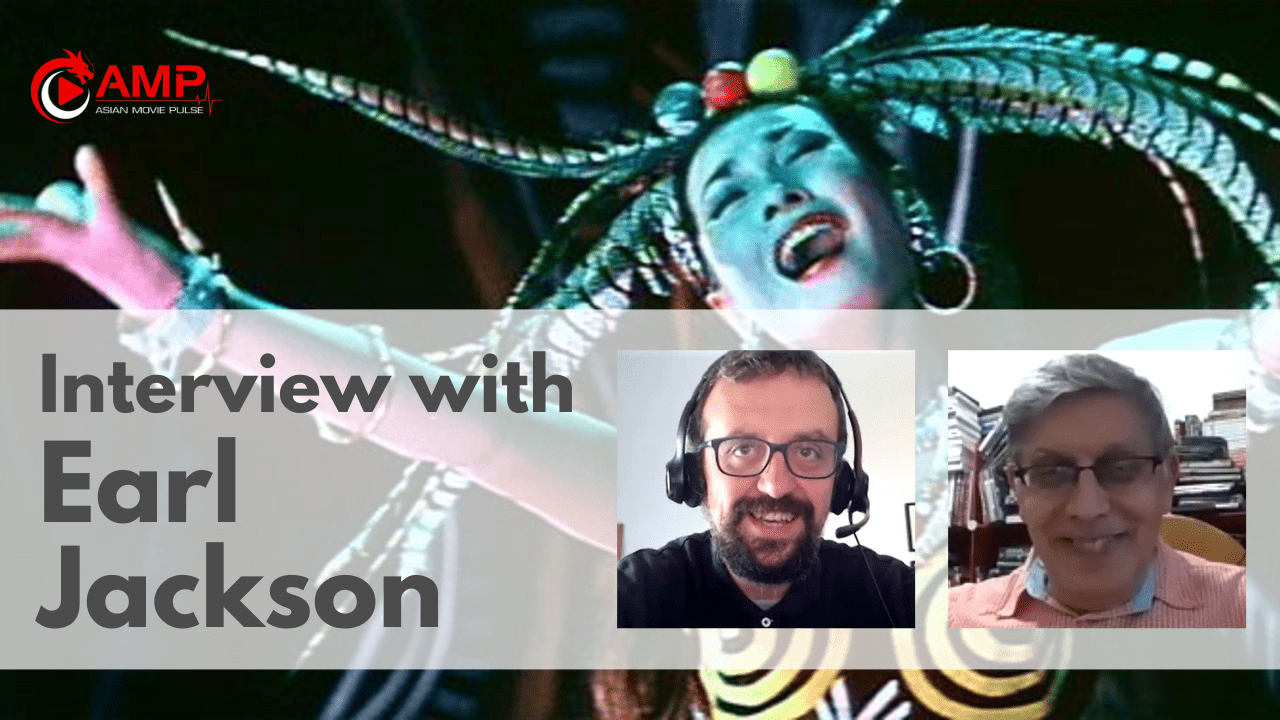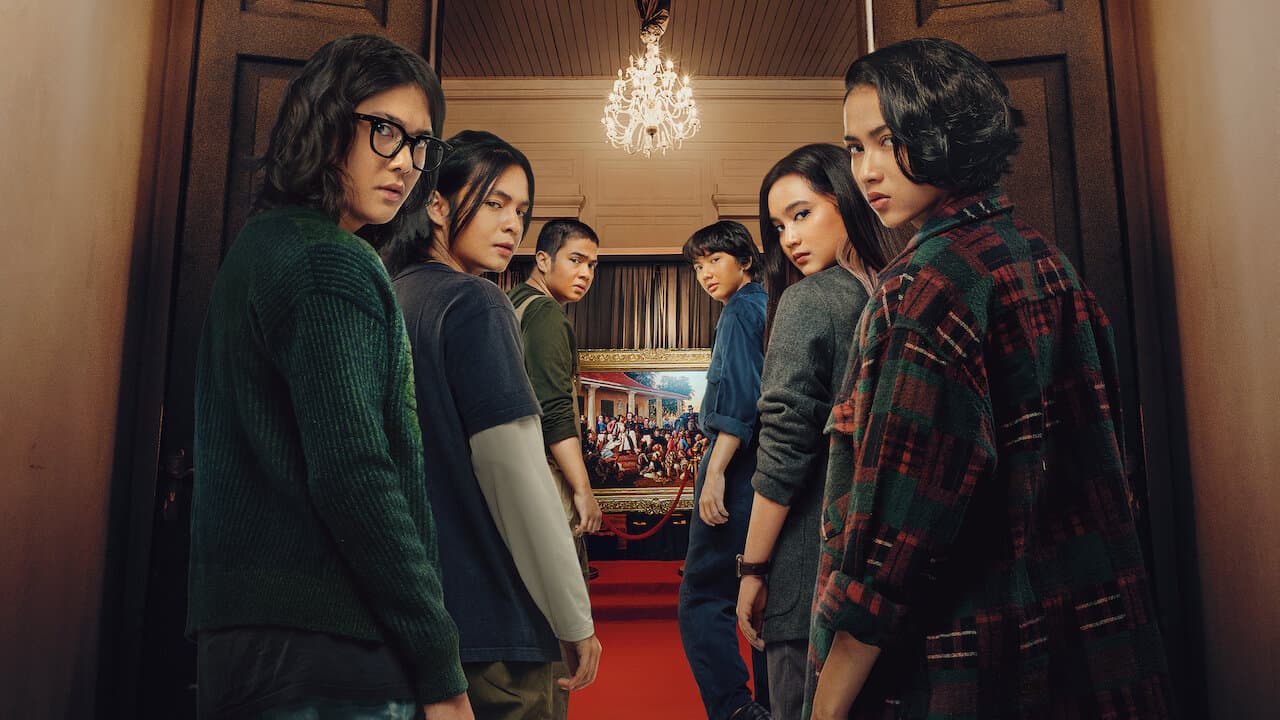Terror Zones – A Most Dangerous Game
The map also serves as a national allegory for the world that Narumi Shohei navigates: local zones of terror which for him are ecological systems in which he deals out death. Each film features its own configurations of such zones. The first, the site of the failed rescue is an abandoned mental hospital (Fig 7).

The setting itself suggests a history of madness and abuse, while in its current state it is steeped in a darkness that threatens to overwhelm anyone who ventures in, a darkness only illuminated by the flash of a gun that ends a life (Figs 8-9).


When Narumi was positioning himself to assassinate Adachi, the rooftop became a terror zone like those on Kohinata's map. First, the sky was split by Katsuragi's helicopter, bearing down on Narumi like an angry wasp, while Katsuragi, an angel in the fifth stage of decay, directs an army of sharp shooters on a nearby roof to blanket Narumi's hiding place with high impact ammunition (Figs 10-11).


Terror Zone – The Killing Game
In “The Killing Game”, Narumi becomes caught in the conflict between the Hanai gang, and the Kotobuki gang. After surviving an assassination attempt from the Hanai gang, the oyabun Katsuda (Kei Sato) hires Narumi to kill Hanai. However, Katsuda has a secret plan to pin the murder solely on Narumi. Sato's stardom that spans both art and popular film is another strategic casting decision in securing the trilogy's legitimacy, as he plays another character in the third film (Fig.12).

After killing Hanai, Narumi is ushered into a trap that constitutes another zone of terror, Katsuda's immense warehouse/factory. Katsuda himself appears far above Narumi's head, on a long mobile platform. This platform divides the screen in two horizontally and places Katsuda in control of both the threat he makes and the torture he orders. Cinematically, Katsuda's position also suggests the higher acclaim that Sato enjoys as an actor at that time (Fig. 13).

Terror Zone – Execution Game
The terror zone in “Execution Game” is the most complex – thematically, psychologically, and meta-cinematically. The opening credits roll over an unconscious Narumi in a darkened room. Behind him there are two arms visible, whose position suggests another victim – but they turn out to be the arms of one of the captors waiting for Narumi to regain consciousness to torture him and hang him from the ceiling (Figs. 14-15).


Once Narumi is left on his own, hanging from the ceiling, the film draws on the tropes of the action genre: Narumi manages to free himself and to find a loaded pistol his torturer had left nearby. But even armed, Narumi had to feel his way through murky labyrinths –beset by opponents who appear as ethereal figures more reminiscent of the ghostly invaders in Kiyoshi Kurosawa's “Pulse” (2001) than a Toei-adjacent crime film (Figs. 16-17).


As Narumi proceeds through the rooms, the appearance and disappearance of the other shooters becomes increasingly unnerving, especially in their ability to dodge his bullets. When he seems to have finally hit one of his assailants, the victim simply stands up again and joins two other shadows in becoming very visible as one shoots Narumi in the hand, and the three surround him and push him into a darkened room. The blackness gives way to a projector light. As Narumi's bloody hands raise to shield his eyes from the brightness, the name Yusaku Matsuda is emblazed across the image, the only name missing from the previous credit sequence (Fig. 18). The construction is three-fold: in the background, the blank white rectangle awaiting images now holds Narumi's shadow, cast by Narumi's body in the middle distance between the on-screen world and the star's name on the film projected on the actual theater screens (in the original theatrical release).

The film returns to the plot as the screen behind Narumi fills with a series of his images, apparently from a clandestine surveillance camera, (actually stills from the previous films in the trilogy). An unseen voice lists Narumi's skills as a top assassin and informs him that his gun was full of blanks. Before the images shift to photos of the man the voice wants to hire Narumi to kill, this sequence is also meta-cinematic in that it allows the final film to reflect on the previous ones, and to create a collage of Narumi across time while projecting those times on the present, disempowered Narumi (Fig 19).

His captors then re-drug him and dump him on a subway platform. Once he reaches home, they call him to remind him that he must complete his mission once his hand has healed. The situation itself exemplifies how rules in a game can be independent of the way the world works outside of it. Why kidnap someone who is always open to being hired to kill? And if your mission depends on the assassin's marksmanship, why shoot him in the hand? The game, therefore, is structured more like a ritual than a strategy or a rational contract. And Narumi will reveal the depth of his investment in such rituals in the climactic sequence of the film.
Narumi's hand recovers, he completes the mission, and is given another: to shoot a person in police custody who will be in the backseat of a police transport from jail to an embassy. The plan to stop the car briefly and the trajectory of the bullet is meticulously laid out, and there are two cars full of henchmen as support staff. When Narumi accidentally shoots the driver, the car speeds away and both Narumi and the others pursue it to finish the job. But when Narumi finds the police vehicle abandoned and empty, he becomes enraged, shooting at least one of the henchmen and badly beating another, sparing him to fulfill one demand: “Take me to the underground hideaway.”
The circumstances suggest he feels betrayed and wants revenge on his client, but a more critical consideration calls this into question. First of all, the nature of the possible betrayal is not at all clear. Secondly, Narumi had been unconscious both when brought to the location and taken out of it, therefore he has no way of knowing if that dungeon is connected to wherever his client's organization is located. When we suspend belief in the reasoning, Narumi's demand to return takes on a darker desire for the terror zone itself. Narumi's hapless survivor of his wrath guides him to the entrance, through a Catholic church which adds another dimension to the ritual nature of the sacrifices enacted and volunteered for there (Fig.20).

Narumi's guide enters through the door and is shredded by a barrage of bullets. Narumi finds a basement window, and once inside roams the labyrinth mastering the shadows he has become (Fig. 21), dealing out death and discovers the passage between the underground lair and the offices of embassy staff behind all the conspiracies (Fig. 22).
















I have viewed The Game Trilogy multiple times and most of the other films you mentioned. Your Zones of Terror analogy for The Game Trilogy resonates in particular, and I like your comments about the time and scene dissonances and the memory on memory elements of the trilogy.
Narumi is indeed a monster, but he lives in a world of monsters greater than himself. He plays by the rules of the game: he takes the contract and he fulfills it as best he can. It is the monsters greater than himself who interfere with, abruptly change or violate the rules. Those monsters are engaged in organized crime, violence and corruption that affects Japanese society as a whole. Nurumi is not killing innocent, ordinary citizens. He doesn’t attack or kill any of the mahjong players who he suspects of cheating, even when they seriously beat him or later for revenge. Narumi stays within the rules of the game, including payback for those who violate the rules.
It’s not a secret Japanese society has long been male-oriented and male dominant. Whether we agree with that or not, the Trilogy was filmed 45 years ago when those attitudes were still relatively unchallenged. And the majority of the women Narumi deals with in the Trilogy are not innocent: they are duplicitous, scheming accomplices of organized brutal crime.
I appreciated your comments about the correspondence between Narumi, the man without a history, and Yusaku Matsuda’s own personal history. An actor with silenced history playing a character with no history. Was that coincidence? I think not. Both the director and Matsuda had to be fully alert to that element. Certainly in the Trilogy, Narumi’s lack of back story is a magnet that pulls our focus and interest in the character more effectively than the inclusion of any back story in the film would.
Thanks for this series on Yusaku Matsuda. I look forward eagerly to the next installment.
thank you, Link. I really appreciate the depth and engagement of your reading.